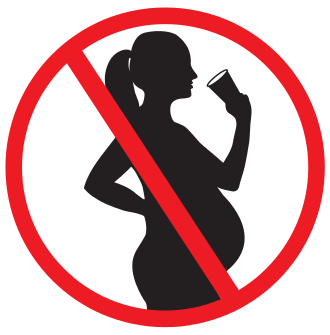
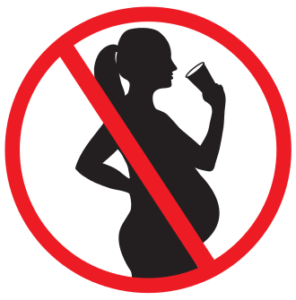
You see them at restaurants, grocery stores, and parties. In your fridge, in your cupboard, and on TV. In city streets and in the trash. And most likely, you’ve never paid attention to them.
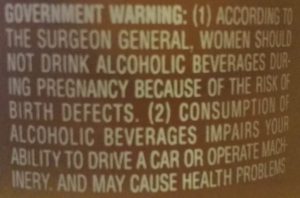
Every bottle of alcohol you’ve seen since 1988 has had a sticker on it, saying, “GOVERNMENT WARNING: According to the Surgeon General, women should not drink alcoholic beverages during pregnancy because of the risk of birth defects.”
Even if you’ve never noticed the sticker on alcoholic beverages, you’ve probably heard that pregnant women shouldn’t drink alcohol. Why should they avoid alcohol, and what happens if they do drink?
Unfortunately, alcohol consumption during pregnancy has many negative impacts on the developing baby. Affected children tend to be smaller, have altered facial features, develop more slowly, and have issues with memory, learning, decision-making, self-regulation, and social behavior. And these are just some of the most common outcomes; many other significant problems can also occur.
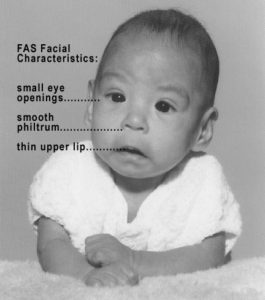
A child with symptoms resulting from prenatal alcohol exposure is diagnosed with a fetal alcohol spectrum disorder (FASD). Sadly, there is no cure for FASD, and the effects last throughout the child’s lifetime.
Numbers help us better understand the scope and impact of FASD:
- 0: the amount of alcohol considered safe during pregnancy. Research has conclusively determined that heavy alcohol consumption (binge drinking) causes FASD, but research on light to moderate drinking is less clear. However, since maternal genetics, age, size, nutrition, timing of alcohol consumption, and many other factors can influence alcohol’s effects, recommendations state that no pregnant woman should consume alcohol.
- 3,000,000: the number of women in the U.S. at risk of having a child with FASD. These women are sexually active, do not use birth control, and consume alcohol.
- 50: the percentage of pregnancies that are unplanned. Unplanned pregnancies contribute to the difficulty of asking women to avoid alcohol completely during pregnancy since often they did not intend to become pregnant.
- 4-8: the number of weeks it usually takes for women to realize that they are pregnant. This makes it difficult to avoid alcohol during pregnancy since if a women doesn’t realize she is pregnant, then she doesn’t know to avoid alcohol. Unfortunately, alcohol can harm the fetus from conception.
- 10: the percentage of women who continue to drink alcohol even after discovering their pregnancy.
- 2015: the year that the CDC issued a report recommending that women who were of reproductive age and who wanted to drink alcohol should be on birth control. This report led to a large backlash from people saying that the government was trying to control their lives.
- 2-4: the percentage of children in the U.S. who are affected by FASD. In the U.S. today, the number of FASD cases rivals the number of autism cases.
- 13-20: the percentage of children in some South African populations who are affected by FASD; these populations have some of the highest rates in the world.
- 60-80: the percentage of children with FASD worldwide growing up in institutional settings and/or foster care.
- 6,000,000,000: the cost of FASD-related medical bills every year in the U.S.
- 61: the percentage of teenagers with FASD who have been in some sort of legal trouble. Prenatal alcohol exposure disrupts the brain centers that regulate impulses.
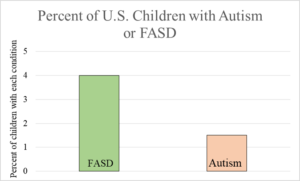
Current estimates show that more children in the US have FASD than autism. Data adapted from CDC and Pediatrics Journal.
These numbers paint a stark picture of FASD. Although there is no cure for FASD, early intervention and treatments can improve a child’s cognitive and social development. However, the emphasis is on “early.” Without intervention, children with FASD struggle greatly throughout life, and the people around them struggle too.
Fortunately, avoiding having a child with FASD is as simple as avoiding alcohol, unless you (or your partner) are on birth control. The next time see a bottle of alcohol, you can look for the Surgeon General sticker and remember the shocking FASD statistics that it tries to prevent!
Peer edited by Lindsay Walton
Follow us on social media and never miss an article: